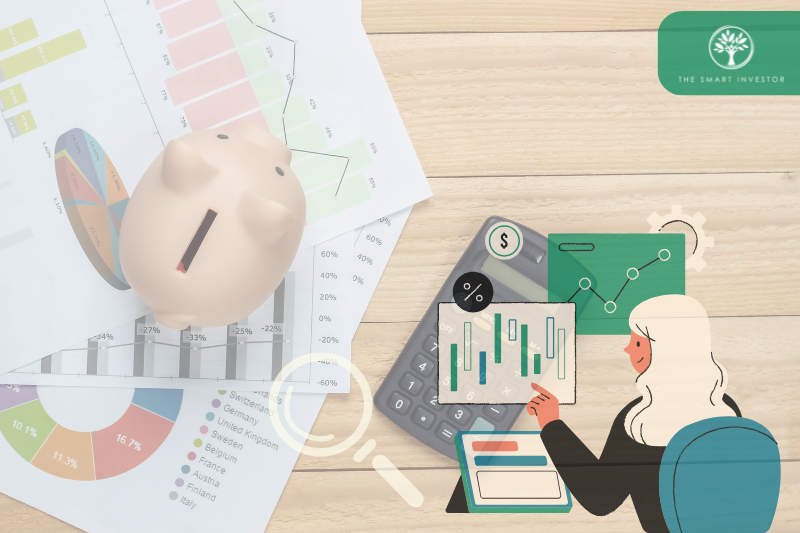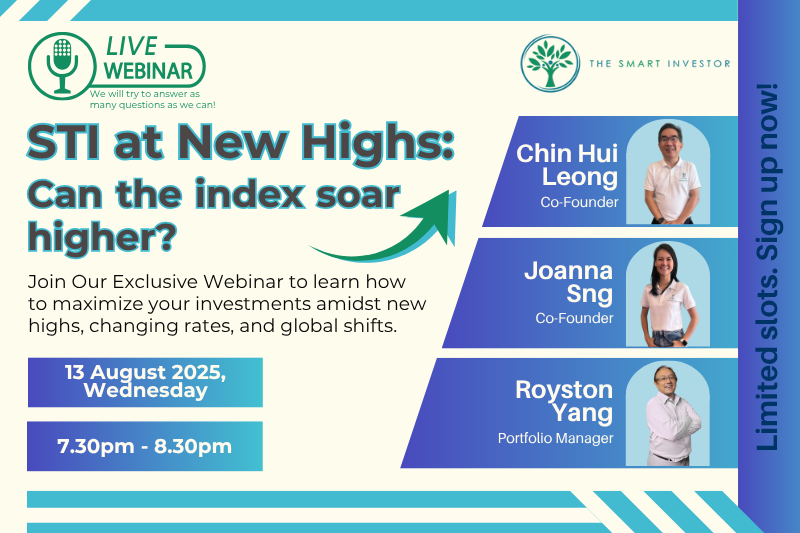The investing world is obsessed with buying low and selling high.
It sounds logical. It feels smart.
It’s also nearly impossible to execute consistently.
But what if terrible timing isn’t actually that terrible?
What if buying at every market high, which is the exact opposite of conventional wisdom, can still build substantial wealth?
With The Straits Times Index (SGX: ^STI) now hovering near 4,300 and hitting fresh records, this isn’t just theoretical.
It’s exactly the question facing Singapore investors today.
The Myth of Perfect Timing
“Buy low, sell high.”
It’s investing’s golden rule, and also one of the most impossible to follow consistently.
According to Schwab’s research on five hypothetical long-term investors over 20 years (2005-2024), someone with perfect timing who invested $2,000 annually at each year’s market low accumulated $186,077.
But here’s the stunner: an investor who simply put money to work on the first trading day of each year ended up with $170,555.
That’s only $15,522 less than perfect timing.
Even more revealing?
The investor with terrible timing, the one who bought at each year’s market peak, still accumulated $151,343, nearly three times more than the procrastinator who kept waiting in cash and earned just $47,357.
The lesson is stark: terrible timing beats no timing every single time.
The Singapore Evidence: STI Rewards Patience, Not Timing
Singapore’s own market tells a similar story. The SPDR Straits Times Index (SGX: ES3), an ETF tracking our benchmark index since April 2002, has delivered a remarkable 427% cumulative return over 23 years.
That translates to turning every $10,000 invested at inception into $52,707 today.
This performance was through the 2008 financial crisis, the 2020 pandemic crash, multiple corrections, and countless “this time is different” moments, patient STI investors saw their wealth grow more than four-fold.
Even recent buyers have been rewarded.
Investors who bought during what seemed like expensive levels five years ago have nearly doubled their money, with the STI ETF delivering 99.8% cumulative returns over that period.
The kicker?
These returns include multiple occasions when the STI hit what appeared to be “dangerous” new highs, only to keep climbing over time.
The Hidden Truth About Market Timing
The financial industry loves showing scary charts about “missing the best days.”
Missing just 10 of the market’s best days over 20 years can cut your annual returns from 9.52% to 5.33%.
Bank of America found that missing the S&P 500’s 10 best days each decade would leave you with just 28% total returns instead of 17,715%.
But here’s what those charts conveniently leave out: the effects are symmetric.
Avoiding the worst periods can be just as beneficial as catching the best ones.
Seven out of the 10 best days often occur during bear markets, clustering with the worst days in periods of extreme volatility.
In 2020, the second-best day fell right after the second-worst day.
The message is clear: the biggest moves happen when fear is highest and most investors are frozen.
Why Dividends Make Highs Less Scary
This is where dividend stocks provide a psychological edge.
While waiting for prices to recover from a high-altitude purchase, quality dividend companies keep paying you to be patient.
Singapore’s dividend culture is particularly strong.
Even the STI ETF itself demonstrates this resilience.
During 2024, STI investors received S$0.159 in distributions, nearly double the S$0.083 paid during the challenging 2021 period.
These semi-annual payments continued flowing even during market stress, providing tangible returns regardless of daily price movements.
The beauty of dividends during market highs is simple: even if your entry price looks expensive in hindsight, those quarterly or semi-annual payments keep flowing into your account.
Over time, dividend reinvestment becomes a major driver of total returns, especially when you factor in Singapore’s tax-free dividend policy for individual investors.
When you buy dividend-paying stocks at market highs, you’re not just hoping for capital gains — you’re getting paid while you wait.
The Real Cost of Waiting
Schwab’s research across 80 different 20-year periods dating back to 1926 found that in 70 of those periods, the rankings remained exactly the same: perfect timing first, immediate investing second, terrible timing fourth, and waiting in cash dead last.
Think about that.
Even buying only at market peaks beat waiting in cash in 87.5% of all 20-year periods.
Here’s the uncomfortable truth: investors who say “I’ll wait for a dip” usually don’t buy when that dip arrives.
Fear peaks precisely when opportunities are best.
Get Smart: Compounding Beats Timing
The real secret isn’t perfect timing — it’s time itself.
Over 20 years, the difference between perfect timing and immediate investing was about $700 extra per year.
That’s meaningful, but hardly worth the stress of trying to call market tops and bottoms.
The STI’s 427% cumulative return since 2002 represents the power of staying invested through multiple market cycles.
That’s wealth creation that no market timer could have predicted, but every patient investor could have captured.
Singapore’s strong dividend culture makes this strategy even more powerful.
While you’re letting compounding work its magic over decades, established dividend-paying companies are depositing cash directly into your account.
The incoming dividends makes market volatility more bearable.
The market will correct. It always does.
But for long-term investors focused on building wealth, those temporary dips become just noise in a much larger story of growth and dividend compounding.
So the next time the STI hits a new high and you’re feeling hesitant, remember this: the best time to plant a tree was 20 years ago.
The second-best time is today. Even at market peaks.
Imagine a life where steady income flows, no matter the market. Our new free report, “Retire Early with Dividends,” reveals how. We’ve pinpointed 5 dependable Singapore dividend stocks that offer a proven, stress-free path to financial freedom. Stop just dreaming and start building your early retirement plan today. Your free guide awaits here.
Follow us on Facebook, Instagram and Telegram for the latest investing news and analyses!
Disclosure: Joanna Sng owns shares of The SPDR Straits Times Index.






